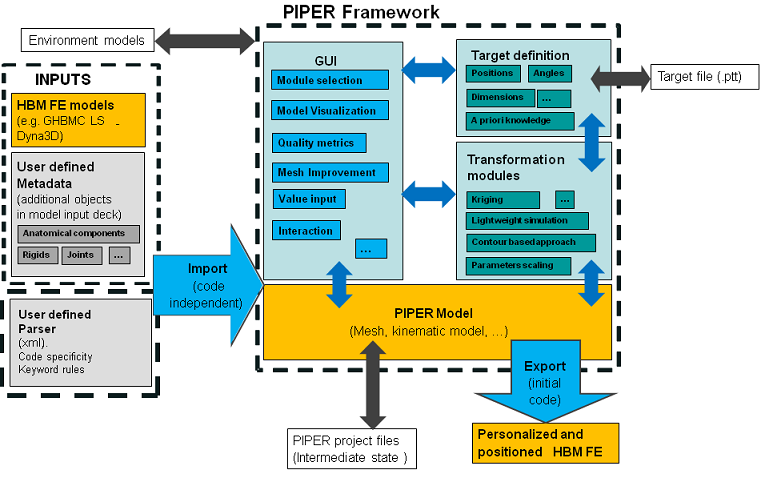 |
PIPER
1.0.1
|
 |
PIPER
1.0.1
|
The PIPER software framework was developed to help with the positioning and the personalization of Human Body Models (HBM) for injury prediction to be used in road safety. These HBM are typically available in one size and one posture (which can be difficult or time consuming to change), and they are implemented in commercial explicit Finite Element (FE) codes such as Ld-Dyna3D (LSTC), Pamcrash (ESI), Radioss (Altair) or Abaqus.
The framework aims to be modular, and model and code agnostic. More specifically, the idea is to be able to apply the same positioning, scaling or personalizing methodologies to several models in different codes, resulting in models that can be used in simulations with little or no correction. For this, the framework handles the import and export of the model, and model transformation methodologies are implemented in reusable modules. In order to facilitate the real time user interactions, the PIPER framework uses only use geometric or lightweight physics approaches for the modules transforming the FE model.
In practice, the import, export, and most modules developed up to now are included in a main application that also provides a GUI, a 3D display of the model and a Python scripting interface. As it is Open Source, the framework and application uses many other open source libraries. The framework can easily be extended by adding modules or through scripting. The software was developed as part of the PIPER European Project.
A schematic overview of the software structure is provided below.

The user manual is divided in the following sections: